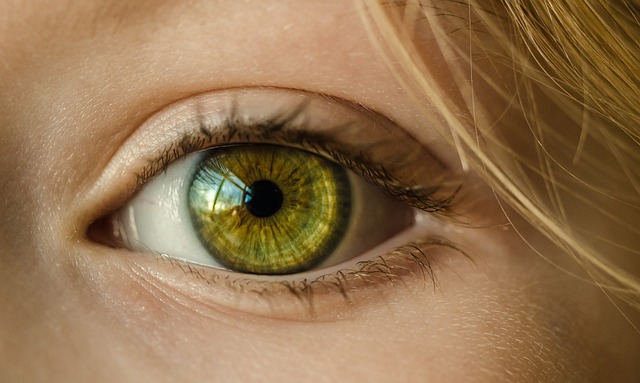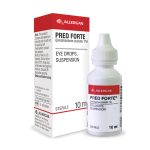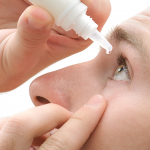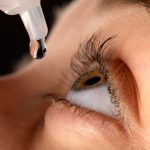8 Common Side Effects of Steroids On The Eyes

Steroids, often hailed for their anti-inflammatory and immunosuppressive properties, have become a cornerstone in the management of various medical conditions. However, the use of steroids is not without consequences, especially when it comes to ocular health.
This article explores the side effects of steroids on the eyes, shedding light on the potential risks and complications associated with their prolonged or inappropriate use.
What are Steroids?
Steroids, also known as corticosteroids or glucocorticoids, are a class of hormones that play a crucial role in regulating various physiological processes within the body. They are synthetic drugs that mimic the actions of natural corticosteroids produced by the adrenal glands. Steroids are commonly prescribed to treat inflammatory conditions, autoimmune disorders, allergies, and certain types of cancer.
Types of Steroids
There are different types of steroids, each with its own potency and duration of action. The two main categories are:
1. Topical Steroids: These are applied directly to the skin or mucous membranes and are commonly used to treat skin conditions, eye inflammation, and allergic reactions.
2. Systemic Steroids: These are administered orally or through injections, affecting the entire body. They are prescribed for more severe conditions such as autoimmune diseases, respiratory disorders, and certain types of cancer.
While steroids can be highly effective in managing various medical conditions, their use is associated with a spectrum of side effects, some of which can have a profound impact on ocular health.
Common Ocular Side Effects of Steroids
1. Cataracts: One of the most well-documented side effects of long-term steroid use is the development of cataracts. Cataracts occur when the lens of the eye becomes cloudy, leading to blurred vision and, if left untreated, eventual blindness. Steroids can accelerate the formation of cataracts by promoting the breakdown of proteins within the lens.
2. Glaucoma: Another serious side effect is an increased risk of glaucoma. Glaucoma is a group of eye conditions that damage the optic nerve, often due to increased intraocular pressure. Steroids can induce or exacerbate glaucoma by increasing the production of aqueous humor (the fluid inside the eye) and impeding its drainage.
3. Increased Intraocular Pressure: Steroids can elevate intraocular pressure even in individuals without a history of glaucoma. Elevated pressure within the eye can strain the optic nerve, leading to damage and potential vision loss if not promptly addressed.
4. Dry Eyes: Prolonged steroid use can cause a reduction in tear production, leading to dry eyes. This condition can result in discomfort, irritation, and an increased susceptibility to corneal abrasions.
5. Retinal Damage: Steroids may contribute to the development of retinal diseases, such as central serous chorioretinopathy (CSCR). CSCR is characterized by fluid accumulation beneath the retina, leading to distorted or blurred vision.
6. Corneal Thinning: Chronic steroid use has been associated with corneal thinning, a condition known as keratopathy. Thinning of the cornea can compromise its structural integrity and result in vision disturbances.
7. Optic Nerve Damage: Prolonged steroid use can compromise the blood supply to the optic nerve, leading to optic neuropathy. This condition can cause irreversible vision loss if not promptly identified and treated.
8. Delayed Wound Healing: Steroids can impede the normal process of wound healing, including healing after eye surgery. This delayed healing can increase the risk of postoperative complications.
Preventing Ocular Side Effects
Given the potential for serious ocular side effects, it is essential for healthcare providers to carefully weigh the risks and benefits of steroid therapy. Additionally, patients should be closely monitored for any signs of ocular complications, especially when prescribed steroids for an extended period.
1. Regular Eye Examinations: Individuals on long-term steroid therapy should undergo regular eye examinations to detect any early signs of ocular complications. These examinations may include measurements of intraocular pressure, assessment of the lens and retina, and visual field testing.
2. Limiting Duration and Dosage: Healthcare providers should aim to prescribe the lowest effective dose of steroids for the shortest duration possible. This can help mitigate the risk of ocular side effects while still achieving therapeutic benefits.
3. Alternative Treatment Options: In some cases, alternative treatments that do not pose the same risk to ocular health may be considered. This is particularly relevant for conditions where steroids are not the only available therapeutic option.
4. Patient Education: Patients should be informed about the potential ocular side effects of steroids before initiating treatment. Understanding the risks allows individuals to actively participate in their healthcare decisions and promptly report any concerning symptoms to their healthcare providers.
Conclusion
While steroids play a crucial role in managing a variety of medical conditions, their use is not without consequences, particularly concerning ocular health. The potential for cataracts, glaucoma, and other serious eye conditions underscores the importance of judicious prescribing and vigilant monitoring by healthcare providers. As research continues to elucidate the complex interactions between steroids and ocular tissues, a balanced approach that prioritizes both therapeutic efficacy and ocular safety remains paramount. Patients and healthcare providers must collaborate to make informed decisions that optimize health outcomes while minimizing the risk of adverse ocular effects associated with steroid use.





